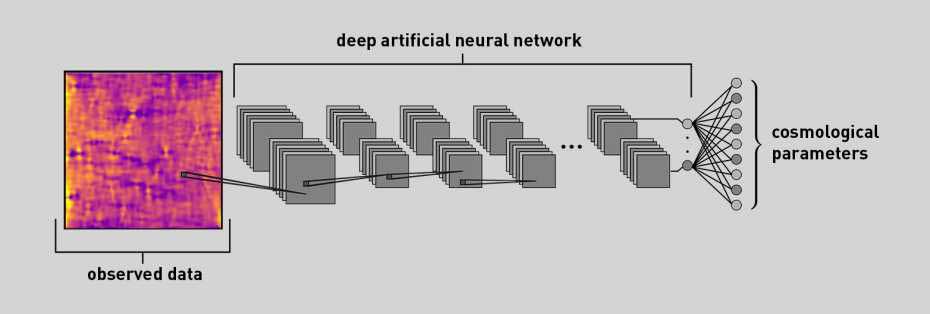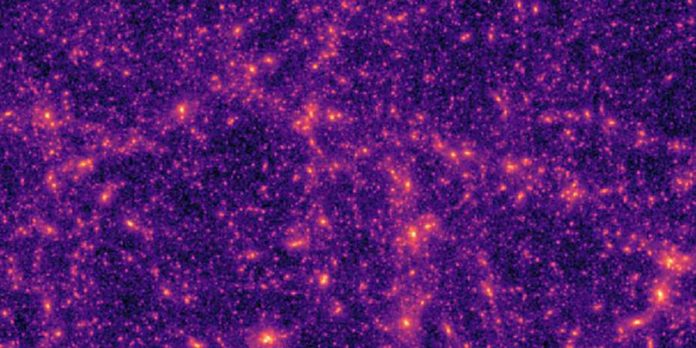Dark matter comprises the bulk of the matter in the Universe, but its particle nature and cosmological origin remain mysterious.
Now scientists at the ETH Zurich have taken a step forward toward understanding the dark matter using Artificial Intelligence. They used cutting-edge machine learning algorithms for cosmological data analysis that have a lot in common with those used for facial recognition by Facebook and other social media.
As dark matter can not be observed directly in the telescope images, scientists usually rely on the fact that all matter – including the dark variety – slightly bends the path of light rays arriving at the Earth from distant galaxies. This effect, known as “weak gravitational lensing,” distorts the images of those galaxies very subtly, much like far-away objects appear blurred on a hot day as light passes through layers of air at different temperatures.

That distortion can then be used to create mass maps of the sky showing where dark matter is located. Next step involved the comparison of those maps to theoretical predictions to find which cosmological model most closely matches the data.
In this new study, scientists used an utterly new strategy. Instead of inventing the appropriate statistical analysis, they used machine learning algorithms called deep artificial neural networks and taught them to extract the largest possible amount of information from the dark matter maps.
Scientists initially trained the neural networks by feeding them computer-generated data that simulates the Universe. That way, they knew what the correct answer for a given cosmological parameter – for instance, the ratio between the total amount of dark matter and dark energy – should be for each simulated dark matter map.
By repeatedly analyzing the dark matter maps, the neural network taught itself to look for the right kind of features in them and to extract more and more of the desired information. In the Facebook analogy, it got better at distinguishing random oval shapes from eyes or mouths.
What’s encouraging is the result offers 30% more precise data than those of traditional methods. For cosmologists, that is a huge improvement as reaching the same accuracy by increasing the number of telescope images would require twice as much observation time – which is expensive.
Finally, the scientists used their fully trained neural network to analyze actual dark matter maps from the KiDS-450 dataset.
Janis Fluri, a Ph.D. student in Refregier’s group and lead author of the study, said, “This is the first time such machine learning tools have been used in this context, and we found that the deep artificial neural network enables us to extract more information from the data than previous approaches. We believe that this usage of machine learning in cosmology will have many future applications.”
Scientists are further planning to apply their method to bigger image sets such as the Dark Energy Survey. Also, more cosmological parameters and refinements such as details about the nature of dark energy will be fed to the neural networks.
